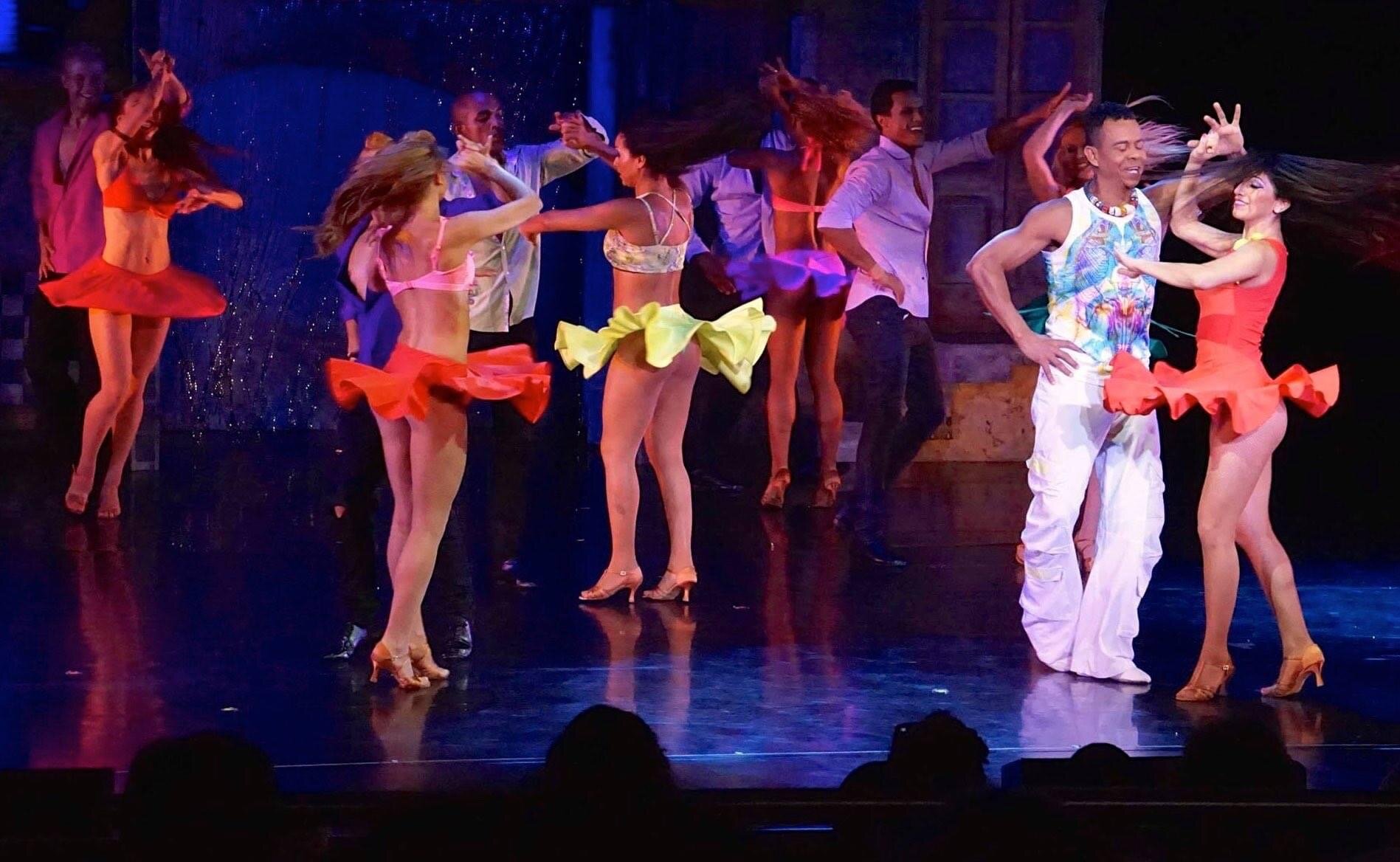A Brief History of Lambada
The music of Lambada was originally developed in the state of Para in the north east of Brazil, where musicians such as Joaquim de Lima Vieira who recorded ‘Lambadas das Quebradas’ and Aurino Quirino/Master Pinduco began to combine beats and sounds that had arrived in Brazil with African people with those from nearby countries and island nations - especially Guadalupe, Martinique, and South American countries. A radio broadcaster called Aroldo Caraciolo who was living in Belém in the Brazilian State of Pará in the sixties, claims to have been the first to use the term ‘lambada’ (meaning ‘whip’ or ‘punch’) for music that he thought had a kick to it like a dose of cachaca. These early ‘Lambadas’ as they were collectively called, plus a blend of cumbia, choro, merengue and carimbo called guitarrada - inspired people from Belém and further south to dance to them in a simple fashion using the influences of their own backgrounds - Maxixe, Carimbo and Lundu from Africa, Cumbia and Merengue from South America, Polka that had come from Europe, and Forró that was already popular in Brazil. When the early Lambada music reached Porto Seguro in Bahia, it was first danced to in Porto clubs that had reputations for being bordellos, in a very sensual, grinding fashion without form or partner separation. Despite its clandestine nature, it grew in popularity and emerged as a highly popular dance rivaling forró. At this point it was still a dance that had little form - just something couples enjoyed in the street or in bars, or on the beach. It was characterized by close-embrace, with side-by-side stepping to the beat, and was not accepted by many people because it was considered too sensual, and associated with the bordellos. But once a large beach cabana in Porto Seguro called Boca da Barra opened its doors to lambada dancers, the dance began to really develop in a rather public way. Small lambada bars and schools around greater Porto opened, such as Jacoba in the church square at Arrial d’Ajuda. Soon, the popularity of Lambada grown immensely, to the point where tourists began flocking to watch the young lambadeiras performing, teaching and competing. At that point, dancers were still not allowed to separate during competitions, and the dance remained simple with very few steps. It was more of an athletic achievement - lambada marathons were introduced in which dancers would dance for ten hours or more for modest prizes.
Eventually, the dance began to take more substantial form and to develop more interesting steps. The Dos Santos brothers were natural leaders. Braz Dos Santos had won competitions such as the Champion of Champions, and Didi Dos Santos was a marathon champion, so their innovations were eagerly accepted by others. Together with Didi’s partner Rebeca Ro Lang, they incorporated steps and movements into the dance, either newly created or borrowed from other ideas or dances. Occasionally, accidents played a part, such as the ‘sitting cambre’ that came about when a girl’s shoes became untied during the dance, and she was forced to sit on her partner’s knee on the dance floor to tie it. The Dos Santos brothers began to create rules to prevent injury, such as the raising of the follower’s arm during turns - which was recognized as necessary after a woman broke Didi’s nose. Didi and Rebeca introduced boneca (rag doll) into Lambada. Boneca was an iconic notion already in the minds of Brazilians, and it was used in vaudeville acts. The Dos Santos brothers and Rebeca created a beautiful style of boneca that is today one of the signature steps of the dance. The Dos Santos brothers even looked to American dance movies of the time to find ideas tome their performances more exciting.
The dance of Lambada began to gain national attention. People were traveling to Porto Seguro - as the center of Lambada during its formative period - to see and learn the dance. There were seats around the dance floor in the Boca da Barra where visitors could sit and watch shows, competitions or lessons. Dance teachers started to travel from other cities in Brazil - Belo Horizonte, Rio de Janeiro and Sao Paulo - to learn lambada and return to teach it in their own schools. It was a Brazilian craze, but it did not reach international fame until a French entrepreneur called Olivier Lamotte d’Incamps formed a music and dance company called KAOMA to promote Lambada overseas. He invited the Dos Santos brothers to be part of this company and they began to travel the world dancing Lambada. The first KAOMA single Chorando Se Foi (known in English as ‘The Lambada Song’) sung by Loalwa Braz eventually became the subject of a copyright dispute, but it was an enormous hit in a multitude of countries, and launched the dance and music of Lambada as a world wide sensation.
Back in Brazil, the dance was hugely popular in clubs throughout the country, in fact, DJs were being told they could not play any other music but Lambada. Such huge popularity was bound to lead to a backlash, and that came swiftly once the music industry decided to move on to the next craze. Almost overnight in some cities, DJs stopped playing Lambada in the clubs. In Sao Paulo and Rio people even held a ‘funeral’ for Lambada. Although Lambada never lost popularity in Porto Seguro, dance teachers in other parts of Brazil could no longer interest students in the dance. In the USA two dreadful, rival movies opened, claiming to feature Lambada and describing it as ‘The Forbidden Dance’- with unfortunate consequences. This did not help the reputation of the dance. Even in Porto Seguro, things began to sour, especially when religious forces began to complain about the ‘immorality’ of the dance. In a horrifyingly savage act, the Boca da Barra was burned to the ground in an act of arson.
Lambada dancers moved to other locations, but the association with the bordellos remains a stigma on the dance to this day. Less than ten years ago, a club called ‘Oasis’ which was the primary lambada bar in the city - was closed by the city, torn down and moved to a back street from its featured position beside the ferry terminal. Many local people in Porto Seguro fail to recognize that lambada has grown worldwide to a beautiful and complex dance, with clear rules, signature steps and elite dancers teaching it and performing it on the world stage.
Original Lambada music became scarce, and until recently it was no longer made. So people began dancing to Zouk music from the Caribbean. In Brazil, contemporary forms of Lambada began to emerge - especially from Sao Paolo and Rio. These myriad forms eventually came to receive the collective title of ‘Brazilian Zouk’. The contemporary form of Lambada differed from classical Lambada especially in the allowing of cessation of stepping. Brazilian Zouk was developed as a slower, more upright dance that was easier for many students - without the complex footwork and fast reflexive patterns of Lambada. Nevertheless, the dance is essentially still Lambada, and retains many of the original steps and movements, although in a modified form.
After the demise of KAOMA, Lambada communities grew and developed in many countries, notably in Spain (where DansaBrasil promoted it), Israel (originally through the efforts of Lisa ?), The Netherlands (as promoted by Claudia de Vries), Argentina (where Gilson Damasco promoted and taught) the United Kingdom (where Berg Dias and his sister Solange opened a school) - and now the USA.
In the USA, after the initial introduction by KAOMA which toured major USA cities in the early 90’s, the arrival of several teachers began to establish Lambada communities and schools in certain USA cities. Pablo Schmoller was one of those teachers who introduced Lambada to students in New York, and Shani Mayer continues to teach Lambada in L.A. Lena Thieme is a veteran of Lambada teaching and performing and she teaches in Portland, as does Many Maldonado Thieges. Hisako, Ry’El and Jessica Lamdon have flown the Lambada flag in New York for many years now. Joel Beall has taught Lambada in California for more than a decade, while Devon Near-Hill, Nathalia Carbajal, and Irina Issakova now also teach in California. Brad Meccia teaches in Tennessee. Master Braz teaches in Florida and throughout the US. Several well known Brazilian teachers have been invited to Congresses and Festivals, and the US Lambada community has benefited from the presence of luminaries such as Ricardo Ferarri, Romina Hidalgo, Leo Bruno, Gilson Damasco, Adriana Coutinho, Patricia and Felipe Lira.
Classical Lambada continues to develop and grow. New steps and variations continue to be added by exceptional innovators in many countries, and the joy of its complexity, athleticism, and thrilling mystery lives on.

